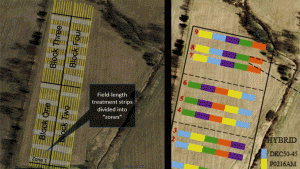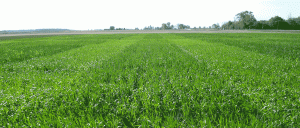Canada 150
CELEBRATING ONTARIO’S FARMING HISTORY
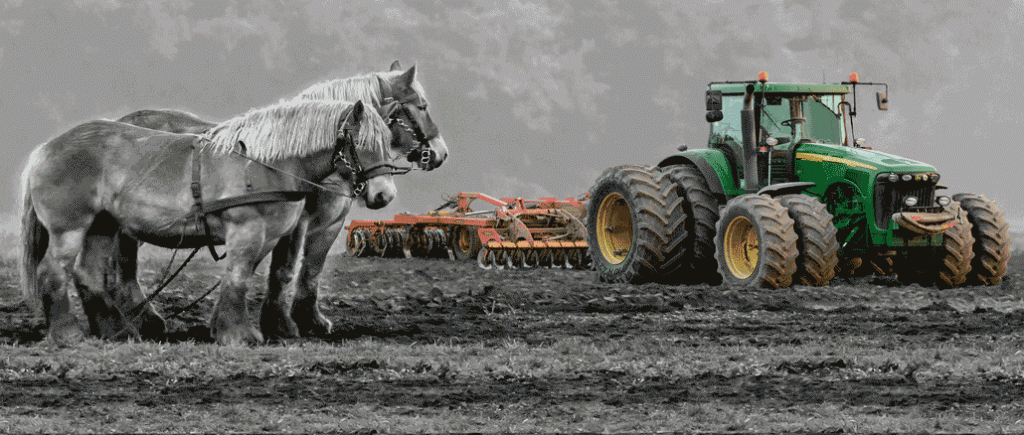
On July 1, Canadians celebrated the 150th birthday of our country. Farmers were instrumental in building the communities that have shaped our nation. While there are now fewer farms and fewer farmers than there were in 1867, those that remain are carrying on a proud family tradition. We spoke with two Ontario farm families and asked them to share their legacies.
THE CHAUVIN FAMILY
Maurice Chauvin is the sixth generation to work on his family farm in Pointe-aux-Roches on the shore of Lake St. Clair. He is a descendant of one of the oldest French farming families in southwestern Ontario and still lives in the original house and farmstead.
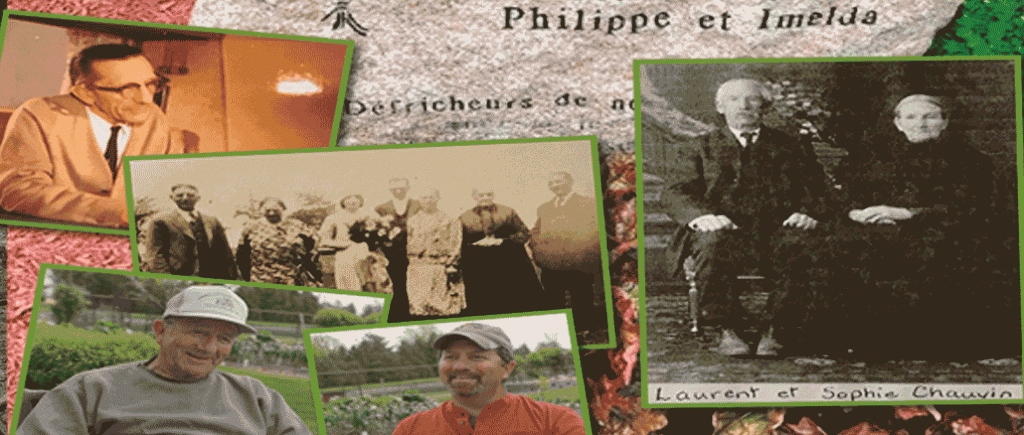
His ancestors, part of a community of French settlers that arrived in 1701, settled on either side of the Detroit River. As the population grew, land close to the river became scarce, and the Chauvins moved farther southeast to the shore of Lake St. Clair.
“They were here since 1827, prior to being able to buy land,” explains Robert Chauvin, Maurice’s 80-year-old father. “It was only after the engineers came and established concessions and lots that they could identify property and they officially purchased the land from the crown in 1846.”
At that time, ash trees were prevalent, and the family had to clear the trees to be able to farm the land.
“I often think of our ancestors as we are working and think of the hard times that they must have gone through. When they showed up it was all forest. Clearing the land with horse and buggy and no modern equipment like we have today, I imagine it was a real hard life,” says Maurice. “When you go back through history, everyone was a small farmer, and they farmed a crop to feed their family.”
“Everybody had animals, a few pigs, a few cows, they all had horses, and they grew oats and hay to feed them,” adds Robert.
As the area developed, the Chauvins saw the CNR railway line get put in through their farm, helped to establish the town’s caisse populaire (Credit Union), and helped to found the local agricultural coop — all still in operation today and the backbone of the local community. But it was the advancements in technology that allowed the family farm to continue.
“My dad was actually a physically weak person and because of that he would buy any new, modern machinery that made life easier. He had the first tractor, the first combine, the first milking machine,” says Robert. “And if it wouldn’t have been for the tractor we wouldn’t be here today because he didn’t have the strength to handle the horses.”
Robert’s father, Phillipe Chauvin, milked 16 dairy cows in addition to farming his crops — which included 120 acres of tomatoes. When Robert and his wife took over the farm, they grew the herd to 200 Holsteins before getting out of the dairy industry in 1978. Robert credits the fact that they continued to embrace new technologies for the success and longevity of their family farm.
He also knew the value of an education and Robert encouraged Maurice and his siblings to work off the farm. As a result, Maurice spent 20 years as an electrician before farming full-time.
The farm, now known as Fermes Chauvin Farms Ltd., is a grain and oilseed operation. They grow corn, soybeans, and wheat on 450 acres along with some custom work.
Maurice has continued the tradition of utilizing the latest technology on the farm. They installed solar panels and wind turbines on their farm and have invested in machinery and land improvements.
“We got involved in precision agriculture pretty much right from the beginning — GPS, auto steer, yield monitors, and drones,” says Maurice. “All of our land is laser leveled to have the most efficient drainage possible, and the controlled drainage reserves the water table and limits the amount of fertilizer run-off. It’s more efficient, better for the environment, and better financially.”
Maurice says he makes these investments because the history of the land, and his family’s connection to it, isn’t something he takes lightly.
“I consider myself a steward of the land. Our farm has been passed down from generation to generation, even before Canada was even a country. And I think it is my duty to take care of this land as best as I can to pass it down to the next generation,” says Maurice.
THE WALLACE FAMILY
In 1829, George and Barbara Wallace and their four sons arrived in Wellington County. They’d left Scotland four years earlier with the intent of settling in South America but when the climate didn’t appeal to them, they came north. A few months after their arrival, George died while working to clear a road — leaving his young widow and their sons (between the ages of 16 and seven) to build the family homestead.
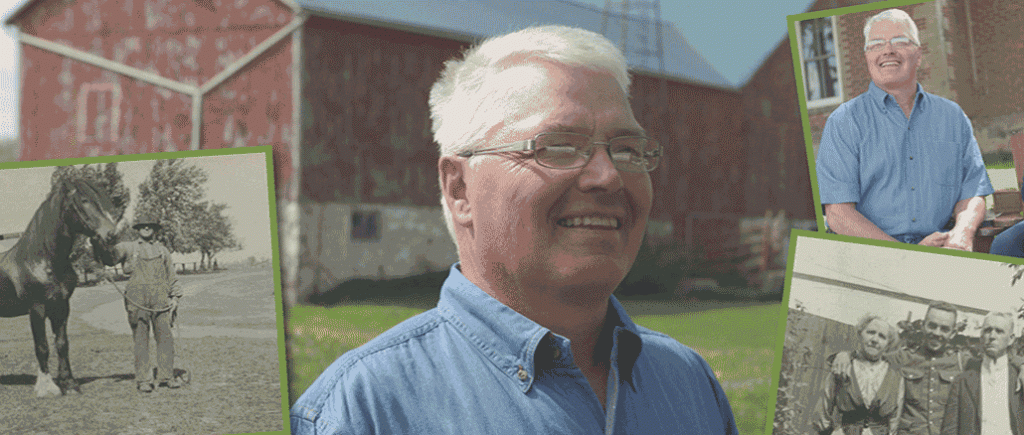
Today — Allan Wallace is the sixth generation to live and work on Wallace Farm. They cash crop and raise cattle on 250 acres.
“When my ancestors first came to this area it was native bush forest and you were required to clear five acres of land to set up a homestead farm,” says Allan. “If you then lived on it for 18 months you could obtain the deed for that land. We have in our family paperwork the original deed for this property to Donald Wallace, one of the sons, dated September 1841.”
During the early years the family settled 50 acres and farmed the land together, as it is still done today. Allan’s brothers and children help on the farm when needed — including his daughter Jeanine Moyer.
“I grew up working alongside my grandpa and my dad, and my boys are now able to do that too. They love working alongside dad and learning lessons from him and learning the stories from previous generations, just as I did,” says Jeanine.
Initially, the Wallace farm grew what was needed to feed the family and the livestock. Potatoes were a mainstay, as were forages and hay. As more tillable acres were made available, it opened up opportunities for different crops, such as oats and barley. While most crops were used to feed the expanding livestock, turnips were the first cash crop to be sold from the farm.
“The turnips were taken to the local train station at times there was a surplus and sold by the wagon load,” says Allan. “Turnips were a very labour intensive enterprise though, and my father, when he set up his family on the farm in 1951, said that was the last year he was going to hoe turnips.”
It was the first of many changes that that would follow on the farm. That same year, 1951, was the year the first crop of corn was planted. Allan was the first to use a combine to harvest the crop from their farm. The first crop of soybeans was grown just 20 years ago.
“It’s just a fact; nowadays we can grow more crop per acre than we ever have. I’m sure my grandfather could not fathom getting the tonnage of grain off this farm as it does today,” says Allan. ”That comes from improvements in technologies from seeds to fertilizers, and improved conservation tillage programs that we have used over time.”
“With every generation there is more improvement,” says Jeanine. “But also with that comes that responsibility to make sure that the land is ready to be passed on to that next generation because that’s also very important to our family.”
The Wallace family has also felt a responsibility to their community. One of their ancestors was reeve of the township and he is known for bringing schools to the local community and Allan’s great grandfather, who played a part in establishing the local agriculture society, was the first president of the Fergus Agricultural Society.
“It was the farmers who built families who built communities to what they are today,” says Jeanine. “You had to have that social network to survive, to share food and equipment, and I think that still exists in rural Ontario today.” •



















